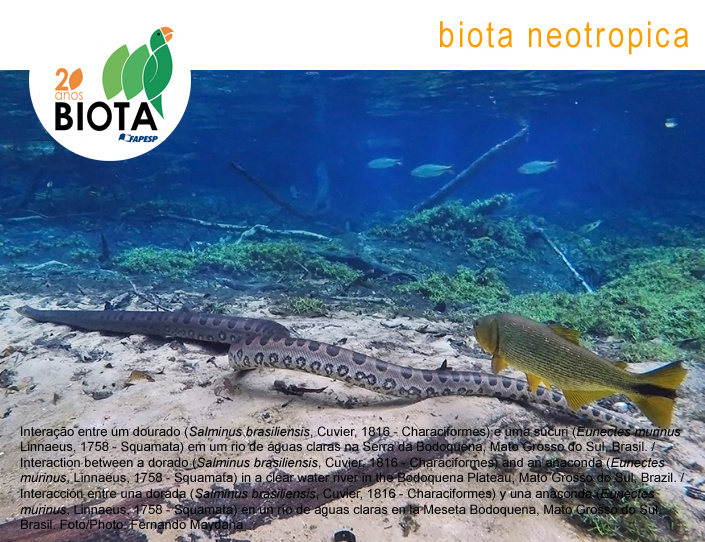The drift effect on nestedness of ephemeroptera, trichoptera and plecoptera orders in the Xingu River
Abstract
Abstract The drift movement consists of the displacement of the organisms inside the water column which allows its passive locomotion. This movement will result in a variation of the communities of organisms along the river, generating spatial patterns. Based on this, we tested the hypotheses a) the drift of individuals in an upstream-downstream direction creates a nestedness pattern, when the upstream is a subset of downstream communities of aquatic insects; b) there will be an increase in the number of individuals and genera as we approach the most downstream point. The present study was carried out in seven sampling points distributed along the Xingu River. The sampling occurred at night in the central area of the river. The number of genera along the river remained constant, and the nestedness distribution of the communities in the upstream-downstream gradient was not observed. Based on the results, it is possible to visualize a turnover of genera in the longitudinal gradient of the river, but with an accumulation of genera in the downstream region. Organisms that are transported by the flow of the water current respond to the characteristics of the body of water by adapting to the type of environment in which they are found.Published
2023-01-01
How to Cite
Leal, T. B., Oliveira, R. S., Giarrizzo, T., & Godoy, B. S. (2023). The drift effect on nestedness of ephemeroptera, trichoptera and plecoptera orders in the Xingu River. Biota Neotropica, 23(1). Retrieved from https://www.biotaneotropica.org.br/BN/article/view/1986
Issue
Section
Articles
